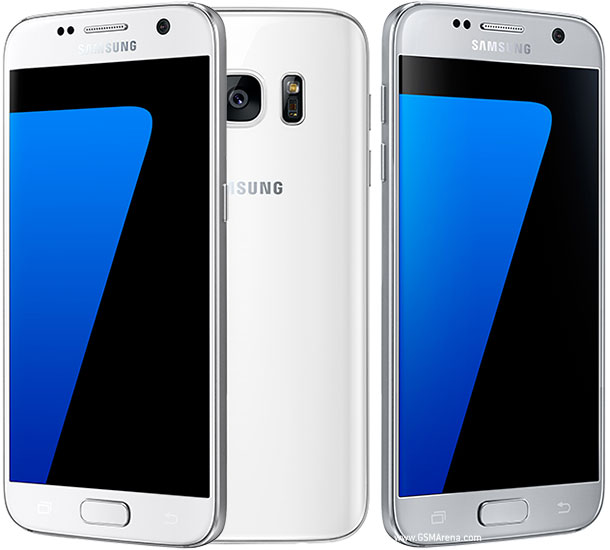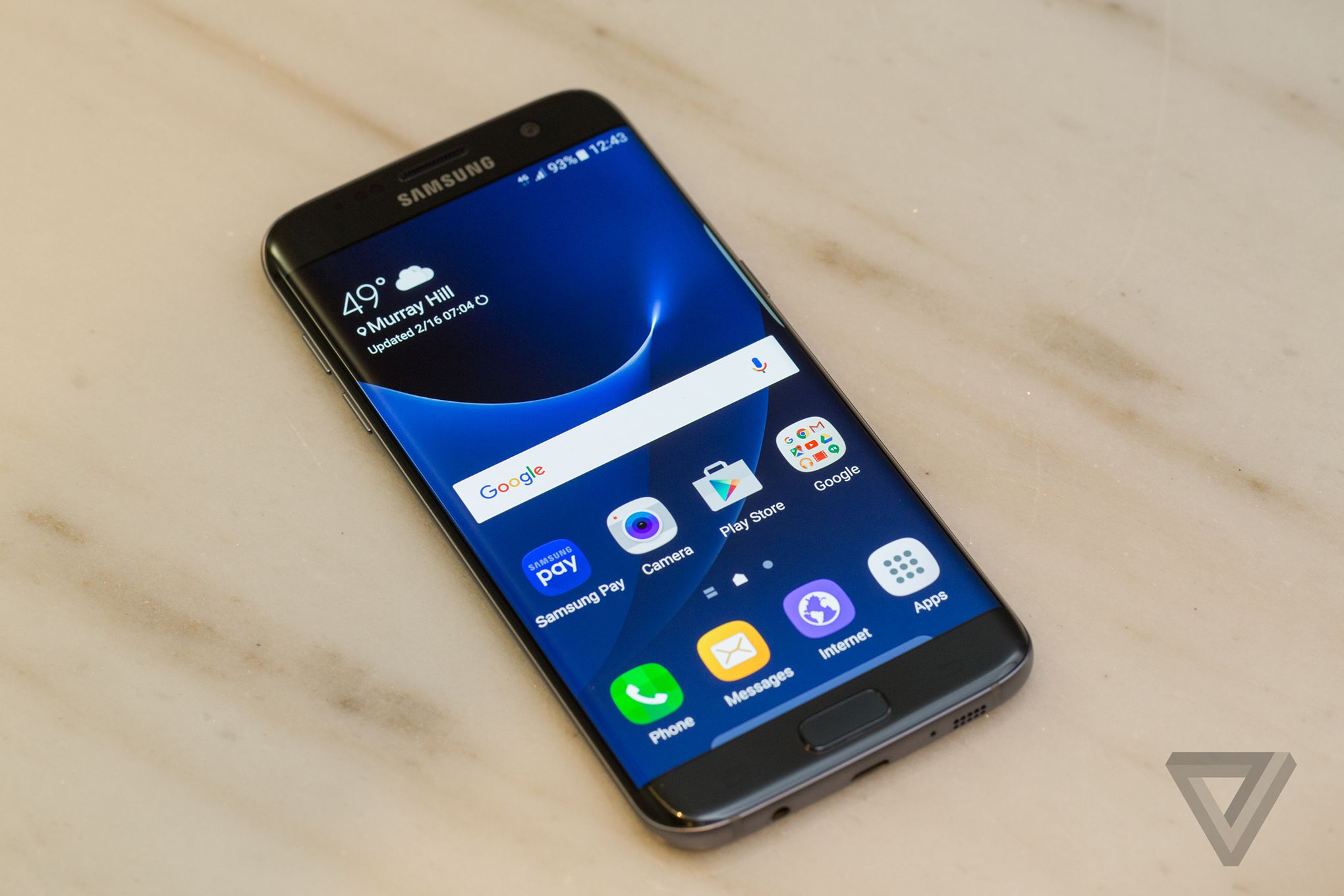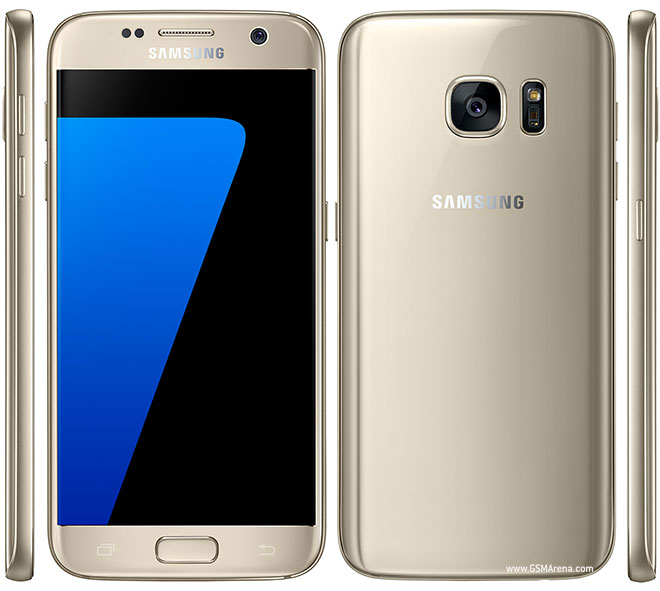 So this here review is gonna be a little different than other reviews...as "technically" I don't own this phone. But, as I know quite a few people who do, and I was able to bribe/threaten/cajole one of them enough (thanks Steven!) to lay my hands on it for a good little while, I feel confident I can give the 4-1-1 to anyone who is actively considering making this their next daily driver device. If you've got a Galaxy S5 or even purchased an S6 early on, this could be the one you're waiting for. Maybe you've used an iPhone for a while and are considering making the switch to Android? This could be the one you've been waiting for as well. The Galaxy S7 - here's looking at you, kid!
So this here review is gonna be a little different than other reviews...as "technically" I don't own this phone. But, as I know quite a few people who do, and I was able to bribe/threaten/cajole one of them enough (thanks Steven!) to lay my hands on it for a good little while, I feel confident I can give the 4-1-1 to anyone who is actively considering making this their next daily driver device. If you've got a Galaxy S5 or even purchased an S6 early on, this could be the one you're waiting for. Maybe you've used an iPhone for a while and are considering making the switch to Android? This could be the one you've been waiting for as well. The Galaxy S7 - here's looking at you, kid!How It Looks:
Samsung didn't change much externally with the Galaxy S7 (coming from the S6) but that wasn't a bad thing. The curved metal and glass housing is amazingly good looking. Bang on Sammy all you want for some things (and I have) but the S7 (and to a lesser extent the S7 Edge) looks like a flagship phone should look. They also reduced the size of the protruding camera hump, which has absolutely zero impact on the way the device works but makes a lot of difference from an esthetic standpoint.
 |
| Photo courtesy of The Verge |
How It Feels:
I have a Nexus 6P, and its great for what I'm doing with my phone: streaming video and audio, and viewing web content. The 5.7" AMOLED panel is great for doing all that; but having said that, its form factor is just a little too big. Samsung really nailed the 5.1" display size, and made the chassis and bezel around it get out of the way and really just leave you with an immersive all screen experience. It fits very nicely in hand, and the power/lock switch and volume controls are within easy reach when using the device one handed. The size is very good, and while some may prefer the curved display tech seen in the Galaxy S7 Edge, the Edge is also comes with a 5.5" display, which some may or may not find easier to hold onto. In my time with the Galaxy S7, I had no issues holding onto it, other than having to give it up at the end. If you're coming from a Nexus 6, Note 4 or 5, or the LG G3 or G4, the Galaxy S7 will feel smaller in hand, and that's not a bad thing. But if you are coming from a iPhone 5s, or even the the iPhone 6 or 6s, this small bump in screen size with a similar form factor will probably not bother you too much. Especially if you are coming from the 5s, this newly discovered real estate in a glass and metal package will probably feel very familiar.
How It Works:
Its fast - very fast. Snapdragon 820 CPU, Adreno 530 GPU, 4GB of RAM, lightest version of TouchWiz ever - these are all good things. And it makes for a user experience that is very fluid and snappy. Pushing all those pixels seems like a breeze. The international variant sports the Exynos 8890 octa-core processor, but since that version isn't likely to be sold here in the U.S. we all will have to make due with the simple quad-core S820. The rumors are that the S820 doesn't suffer from the issues with heat dissipation that the S810 did, and that makes for a "Jamaican style" cool running processor and device. Kudos to anyone who 1) read this far and 2) got the Cool Running's joke.
Samsung either listened to their customer base complaining or just plain got really really lucky, when they brought back two of the Galaxy series more popular features - IP68 dust and water resistance, and the external storage option via SD card slot (which supports SD cards up to 200GB) If you're alive and have had a TV in your home and on for more than 15 minutes at a time, you'll notice that Samsung is really pumping up the IP68 rating in their commercials, even going so far as to have popular figure Lil'Wayne demonstrate this in recent spots. While none of us are likely to pour champagne all over our phones just for the fun of it, the likelihood of a water or other fluid splash is high, and knowing that Sammy has already protected you will give a lot of folks peace of mind.
 |
| Photo courtesy of Droid-Life |
Final Thoughts:
While Samsung doesn't have a stellar track record with things like Android updates and updating TouchWiz, these things have been slowly improving over time. How TouchWiz will perform on this device a year from now remains to be seen, but one thing is presently certain - the Galaxy S7 is so far, by far, the best standard Galaxy phone ever produced. Things like the camera and voice quality and radios are subjective, based on market, and I didn't have a lot of extra time to review them here. But I am confident in saying: if you are in the market for a new device, this should be on your short list. It's compact, has a great display, is packed with features, and won't slow you down.


No comments:
Post a Comment